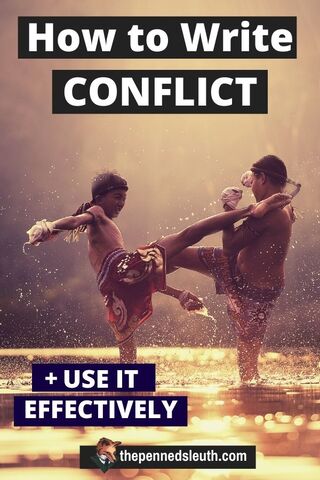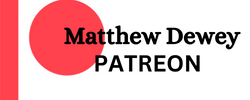Latest Writing Video! |
|
Conflict, the foundation of great development, has always been a topic of discussion. Many have come to believe that good development, both character and story, is merely a rising sequence of events that lead to the progression of a character’s personality and the story. Yet, that all stems from conflict. People do things wrong before they do them right, which leads to problems, which leads to a lesson being learnt. Conflict, here’s how to write it and well! How to Make Conflict Entertaining to ReadThe first concern when writing conflict should be if it will entertain the reader. By ‘entertain’ I don’t mean it will make them feel good, but that it will ‘provoke’ the right emotion. Often, what you want your reader doing is weighing up both sides of the argument and their attachment to certain characters. You must understand which side the reader will go with, or at least, the side you want them to go with. When resolving the conflict, as all conflicts need a resolution of some kind, you need to somehow show the reader which side was the most right, if anyone is right, to begin with. What makes the conflict entertaining is often arguments put forward and collaboration with the resolution. For example, Character 1 makes Point 1, Character 2 makes Point 2. The points conflict with each other, which is all good so far, but then both character go too far to solidify their respective points, following the same paths together, that they end up contradicting themselves and each other. The victor of the conflict is, therefore, both of them and neither of them, at least to some extent and from there a resolution forms. Now, let’s apply this example to a hypothetical story. An Elf character does not like a Dwarf character, believing elves superior and dwarves inferior, in some way. The Dwarf character believes the exact opposite. Yet, these two characters work together, despite their differences, to combat a shared enemy. With time, they learn that their conflict is better through friendly competition than through bitter rivalry. In doing so, they highlight their similarities, what matters, contradicting their previous conceptions of each other. The resolution is a charming friendship over a petty squabble of differences. For many of you reading this hypothetical, you have no doubt found it familiar. It is a simple summary of the characters Gimli and Legolas from Lord of the Rings and their relationship throughout. Yet, despite the many moments and complexities that the hypothetical presents, their conflict was made simple through the example I made before. You will find that making a conflict like this an enjoyable read is very easy, as there is plenty of ironies. Now, let’s create an example of a victor and a loser. Character 1 makes Point 1, Character 2 makes Point 2. Character 2, to solidify their point, take steps which serve to solidify Point 1 more than it solidifies Point 2. The reader will most likely find themselves siding with Character 1, feeling their point has more merit than Point 2. Once more, I will take this example and construct a hypothetical. A cop and their partner work in a police station. The two collect a suspect, take him into the station for interrogation. Cop 1 goes by the book, gets nothing out of the suspect and is ready to toss the suspect back out onto the street. Both cops know that a suspect is a bad man and having him walking free would be a bad idea. Cop 2 gets the information but does it in a bad cop way. Cop 1 argues over this point with Cop 2, but Cop 2’s results speak for themselves. Despite this, Cop 1 stands firm and continues the argument. Cop 2 leans into what works, doing more bad things to catch the antagonist, but in doing so, they harm an innocent. An innocent that would have remained unharmed if they did things by the book. At this point, we as the reader see all and know all. Many readers would have taken Cop 2’s side, even though we knew Cop 1 was right. Once Cop 2 harmed an innocent, most readers would flock to Cop 1’s side, while few would remain with Cop 2, these being people who considered it a reckless mistake. A simple example made complex. One can construct an entire plot out of this example, or at the very least, a sequence of scenes in a novel. Simplify your conflict, then construct it and make sure to use examples where the reader can side with one side or even both sides. That is what makes for an entertaining conflict. Giving the reader the ability to choose a side they are comfortable with or make the characters in the conflict entertaining enough on their own that the reader can enjoy their conflict. Sometimes, Nobody is Right/WrongThere is a variety of conflicts that can arise in a story. Some conflicts won’t have a clear good or bad side. There are many examples of antagonists doing the right thing but in the wrong way. Yet, even then, it comes down to what the protagonist believes is right, as they are often victorious in conflicts such as these. Despite this, it won’t be so easy all the time. It could be a conflict of character, a conflict of ideals or ethics. It is very easy for a single character to believe they are the main character in the story, even when they are not. That is what everyone thinks and very few see what they are doing as wrong. As a result, conflict is created, every value is challenged, but nobody is in the wrong or the right. It is a grey area, where nothing is truly bad and nothing truly good. When the reader notices this in a story, it makes sense that they choose the side they most agree with. It is a fascinating read in many cases, but with most, it falls flat. Do you know why? A reader is often seeking an escape. To dive into a different world, or meet different people, through the main characters. As a result, they enjoy investing themselves in characters they enjoy reading about and silently root for their victory. Yet, this is because they have found characters they agree with, or at the very least, sympathise with. Yet, if a reader cannot invest themselves in anything, if there is nothing for them to agree too, then they will not take sides in a conflict. The reader won’t have the escape they are looking for and will search for some other form of enjoyment in the story. Perhaps the comedy in it, the horror in it, even the quality of the writing. However, it is more than likely they will end up abandoning the book. It’s a terrible thing to happen for a writer. It is incredibly difficult to present a scenario where nobody is right, but even that can make an interesting point in a novel, but not an entire novel in itself. When writing your conflicts, not only consider the effect it will have on the characters and the plot but consider the effect it will have on the reader. Give them reasons to choose a side. How to Weave Conflict into the StoryNext, we tackle the challenge of weaving conflict into a story. It’s a challenge in the sense that conflict is a welcome experience in writing, but not when it is without purpose or reason. You need conflict that is important enough if you plan one weaving it into the story. How you do this is by placing a common goal within a story, but a different way of reaching it. The common goal could be wealth, it could be revenge, it could be love, or simply a desire to be right. How you create conflict is by presenting two characters that want the same thing, but who gets it or how they get it must differ to some extent. That is how you present a simple enough conflict, but how you handle it depends on you. Here is an example: Two characters want to achieve wealth, both run a successful business together. One chooses an unsavoury path for furthering their efforts, while the other chooses an honest path. The result is a conflict of morals, it is clear who is in the right, but they both desire something that highlights their greed. Another example: Two characters are knights, who seek to bring an evil knight to justice. Both have lost someone they love to the evil knight, thus, their lust for revenge is great. Yet, one knight wishes to have the evil knight imprisoned, while the other wishes to execute the knight. Final example: Two characters wish to defuse a bomb. There isn’t much time left. One wishes to defuse it quickly, trusting their experience and cut the red wire. The other wishes to make sure it is the right wire, double-checking and cutting the write with less than a second to spare. In this example, both are right and both could have easily set off the bomb. All these examples show characters conflicting over something in the story, directly affecting them and the plot. Find the shared goal in your novel, that goal being something crucial to the story, then you have a conflict with far greater consequences and impact in the story. Final Tips on ConflictIf done right, conflict can be the most important tool in your writer’s arsenal. It holds all the power of the stories outcome and the development of your characters. It is what leads to important scenes, that highlight a character’s strengths and weaknesses, and depending on the resolution/s, it is what can ultimately decide the outcome of your novel. If I have any final tips to give on writing conflict, they are personal preference, so take them with a pinch of salt. When writing conflict between friends, bring out as much emotion as you can. Make it impactful in that sense, make it so that your characters are fighting for what they believe passionately, powerfully. Use anger, flare-up some tempers and have them shout. A great conflict can be a short, few lines of dialogue, but hold more weight in character than a feud that goes on for chapters. If done right, your reader will be more than impressed, seeing power and emotion so clear in one outburst, rather than an argument that persists like a childish squabble. There are very few fights that last so long before both parties come to a resolution or challenge each other in some other way. Often, if nobody is willing to say they were wrong, it can lead to a full-blown, fists raised fight, which is still much better than constant bickering. Now, that is purely my opinion on writing conflicts between friends. I hope you enjoyed this article on conflict and as always… Good day, goodnight and happy writing! Thank YouAs a big thank you for reading this article I would like to offer you something for FREE!
A writing course on how to improve your main character! Click here to check out your course. If you are unsure about a course, then you can sign up for free training! Claim your free training here! Thank you for reading! Kind regards Matthew Dewey, Writer
0 Comments
Leave a Reply. |







